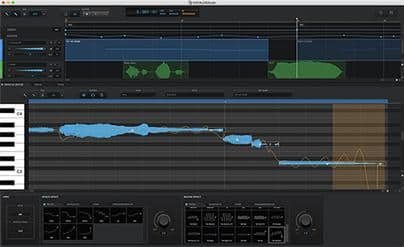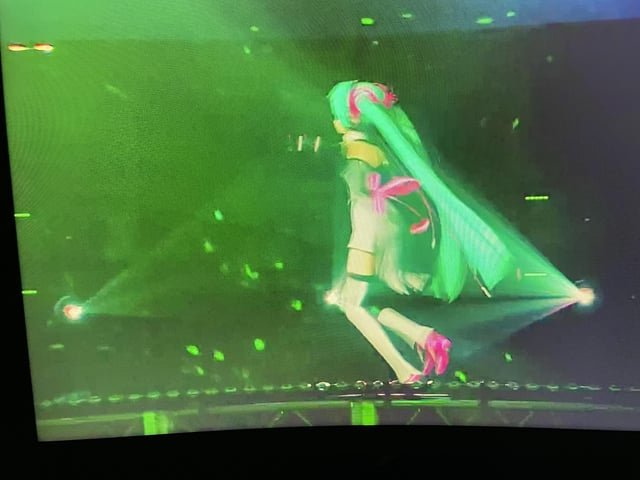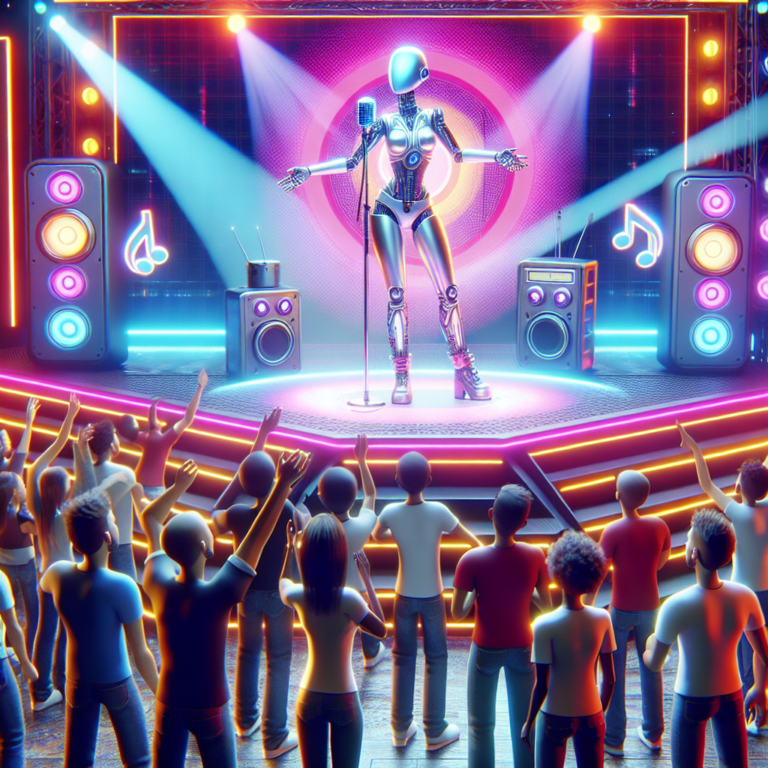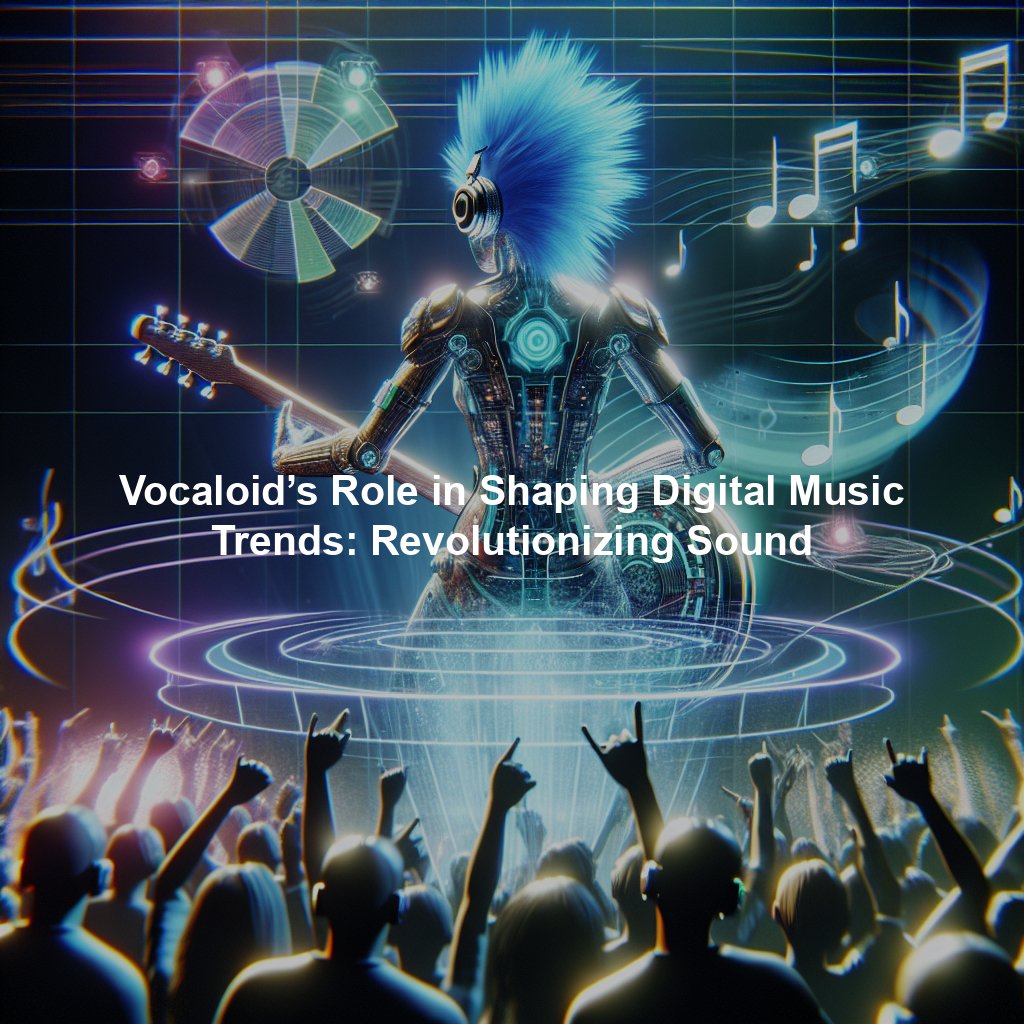Vocaloid has changed how we create music. It uses AI to mimic human voices.
This innovative software allows artists to produce songs without needing a human singer. Vocaloid's impact on the music industry is significant. It opens new doors for creativity and experimentation. Musicians now have access to a wide range of voices and styles.
The technology behind Vocaloid is continuously evolving. This evolution is shaping the future of AI music technology. With Vocaloid, artists can push the boundaries of what is possible in music creation. This blog will explore how Vocaloid is driving advancements in AI music technology. We will delve into its influence on the industry and the exciting possibilities it brings. Stay tuned to learn more about this fascinating topic.
Introduction To Vocaloid
Vocaloid is a remarkable music technology that has captured the imagination of musicians and technologists alike. This software has a unique ability to synthesize singing by inputting lyrics and melody. It has opened new avenues for music creation and performance.
What Is Vocaloid?
Vocaloid is a singing voice synthesizer software. Users input lyrics and melodies, and Vocaloid produces a realistic singing voice. The software uses voice samples from real singers. These samples are processed to create various vocal sounds.
Vocaloid offers a wide range of voices. Each voice has a unique character and tone. This allows artists to create diverse and dynamic music. The software also includes tools for pitch correction and harmony generation. This makes it a powerful tool for music producers.
History And Evolution
Vocaloid was first developed by Yamaha in 2000. The initial version was released in 2004. It featured two voice banks, Leon and Lola. These were English voices. The software quickly gained popularity among music enthusiasts.
The second version, Vocaloid2, was released in 2007. It introduced significant improvements in sound quality and usability. New voices were added, including the famous Hatsune Miku. She became an iconic figure in the Vocaloid community.
Vocaloid3 arrived in 2011. It offered even more realistic vocal sounds and new languages. This version allowed for greater customization of voices. Vocaloid4, released in 2014, introduced growl and cross-synthesis features. These added more depth and versatility to the vocals.
In 2018, Vocaloid5 was released. It brought advanced features and a more user-friendly interface. This version included over 1000 vocal phrases and over 100 audio effects. Vocaloid continues to evolve, pushing the boundaries of music technology.
Vocaloid Technology
Vocaloid technology has become a significant player in the field of AI music technology. It has transformed how music is created and consumed. This innovative software allows users to create songs by synthesizing human-like singing voices. Let's delve into the core components and sound synthesis aspects of Vocaloid technology.
Core Components
Vocaloid technology comprises several key components that work together seamlessly. These components are essential for creating realistic and expressive vocal performances.
- Voicebanks: These contain pre-recorded vocal samples from real singers. Users can select various voicebanks to match different musical styles.
- Editor: The editor allows users to input lyrics and melodies. It provides a user-friendly interface to arrange and edit the music.
- Engine: The engine processes the input from the editor. It generates the final synthesized singing voice.
Together, these components form the backbone of Vocaloid technology, enabling users to create unique and personalized music tracks.
Sound Synthesis
The sound synthesis process in Vocaloid technology is fascinating. It involves several steps to ensure the generated voice sounds natural and expressive.
- Phoneme Processing: The system breaks down the lyrics into individual phonemes. Each phoneme corresponds to a specific sound in the language.
- Pitch Control: The pitch of each phoneme is adjusted to match the melody. This ensures that the singing voice follows the musical notes accurately.
- Timbre Adjustment: The timbre of the voice is modified to match the desired emotional tone. This step adds expressiveness and realism to the synthesized voice.
The result is a singing voice that sounds remarkably human. It can convey a wide range of emotions and styles. Vocaloid technology's sound synthesis capabilities are truly impressive.
| Component | Function |
|---|---|
| Voicebanks | Provide pre-recorded vocal samples |
| Editor | Input lyrics and melodies |
| Engine | Generate synthesized singing voice |
Ai Integration In Music
The integration of AI in music has transformed the industry. Artists and producers now use AI tools to create music. This technology helps in creating melodies, harmonies, and even lyrics. One significant player in this field is Vocaloid, a software that uses AI to mimic human singing. Vocaloid is not just a tool for artists but also a pioneer in AI music technology.
Role Of Machine Learning
Machine learning plays a crucial role in AI-generated music. It allows computers to learn from existing music. The system analyzes patterns and structures in songs. This enables the creation of new compositions that mimic these patterns.
Machine learning algorithms can identify various musical elements. These include rhythm, tempo, and melody. The result is a unique piece of music that sounds human-made. For instance, Vocaloid uses machine learning to improve its voice synthesis. This makes the vocals sound more natural and expressive.
Ai-generated Music
AI-generated music is becoming increasingly popular. AI composers can create music for different genres. These range from classical to pop and even experimental music.
- AI tools can generate background scores for films.
- They can create jingles for advertisements.
- They can even compose full-length albums.
One exciting aspect is the collaboration between humans and AI. Musicians use AI as a partner in the creative process. This collaboration leads to innovative and unique music pieces.
AI-generated music also opens doors for new artists. People with little or no musical training can create professional-sounding music. This democratizes the music-making process, making it accessible to everyone.
| Traditional Music Creation | AI-Generated Music |
|---|---|
| Requires extensive musical training | Accessible to everyone |
| Time-consuming | Quick and efficient |
| Human creativity | Human-AI collaboration |
Overall, the integration of AI in music is reshaping the industry. It makes music creation more accessible, efficient, and innovative. Vocaloid and other AI tools are leading this change, offering new possibilities for artists and music enthusiasts alike.

Credit: www.jeffbullas.com
Vocaloid's Impact On Music Creation
The world of music creation has seen significant changes with the advent of Vocaloid technology. Vocaloid, a singing voice synthesizer, has opened new horizons for musicians and producers. This technology allows users to create songs using synthesized voices. These voices can sing any lyrics input by the user, offering endless possibilities.
Empowering Independent Artists
Vocaloid technology has empowered independent artists in remarkable ways. It offers a cost-effective solution for those who cannot afford professional singers. Independent artists can now produce high-quality music without needing a recording studio.
Here are some benefits for independent artists:
- Low-cost production
- Access to various voice tones
- Flexibility in song creation
With Vocaloid, artists can experiment with different styles. They can create unique sounds without hiring multiple singers. This freedom encourages creativity and innovation in music production.
Expanding Musical Genres
Vocaloid has significantly contributed to the expansion of musical genres. It has enabled the creation of genres that were previously unexplored. Vocaloid's versatile voices can adapt to any musical style.
Here are some genres influenced by Vocaloid:
- Electronic Dance Music (EDM)
- Pop
- Rock
- Jazz
- Classical
The flexibility of Vocaloid allows for the blending of different genres. This blending results in unique and innovative sounds. Artists can push the boundaries of conventional music, creating something new and exciting.
In summary, Vocaloid technology has had a profound impact on music creation. It empowers independent artists and expands musical genres. Vocaloid has democratized music production, making it accessible to all.
Innovations In Vocaloid Software
Vocaloid has been at the forefront of AI music technology. It has transformed how music is created and enjoyed. The latest innovations in Vocaloid software show significant progress. These updates aim to enhance both the software's functionality and user experience.
New Features
The recent versions of Vocaloid software boast new features. One key addition is real-time voice synthesis. This allows users to hear changes instantly. Another feature is improved voice banks. They provide a more natural and realistic sound.
Vocaloid also includes advanced pitch control. This lets users fine-tune vocals with great precision. Enhanced language support is another new feature. It enables song creation in various languages. These updates make the software more versatile and powerful.
User Experience Enhancements
User experience has seen major improvements. The interface is now more user-friendly. Beginners can navigate it with ease. A guided tutorial helps new users get started quickly. This reduces the learning curve significantly.
The software also offers customizable templates. These templates speed up the music creation process. Users can also save their settings. This feature ensures a seamless workflow. Improved customer support is another key enhancement. Users get help quickly when needed.
These innovations make Vocaloid a valuable tool. It caters to both novice and experienced users. The software continues to evolve, pushing the boundaries of AI music technology.

Credit: www.reddit.com
Case Studies
Case studies provide real-world examples of how Vocaloid is shaping AI music technology. These cases highlight the impact of Vocaloid on music creation, production, and distribution. By looking at successful songs and producers, we can better understand this influence.
Popular Vocaloid Songs
One famous Vocaloid song is “World is Mine” by Hatsune Miku. It has millions of views on YouTube. This song showcases Vocaloid's potential in creating catchy tunes. Another hit is “Senbonzakura” by Kurousa-P, featuring Hatsune Miku. This song combines traditional Japanese music with modern pop. These songs have gained huge popularity. They demonstrate how Vocaloid can produce music that resonates with a broad audience.
Successful Vocaloid Producers
KZ, also known as Livetune, is a well-known Vocaloid producer. He created many popular songs featuring Hatsune Miku. His music often blends electronic and pop elements. Another successful producer is Mitchie M. He is known for his song “Freely Tomorrow.” Mitchie M's work stands out due to its high-quality sound. Both producers have contributed significantly to Vocaloid's success. They have shown how Vocaloid can be used to create professional music. Their success stories inspire new creators to explore Vocaloid technology.
Future Of Ai In Music
AI is transforming the music industry. Vocaloid technology plays a big role. This technology allows users to create songs using synthesized voices. As AI music technology evolves, Vocaloid will influence the future of music creation.
Upcoming Trends
AI in music is advancing fast. One trend is personalized music. AI can create songs tailored to individual tastes. Another trend is real-time music composition. AI can compose music on the spot during live performances. Additionally, AI can assist musicians in songwriting. AI tools help in generating lyrics and melodies.
Potential Challenges
Despite the benefits, there are challenges. One challenge is copyright issues. Who owns the rights to AI-generated music? Another challenge is the quality of AI music. AI needs to match human creativity. Lastly, there is the issue of job displacement. Musicians may worry about AI taking their jobs.

Credit: www.reddit.com
Frequently Asked Questions
What Is Vocaloid In Music Technology?
Vocaloid is a singing voice synthesizer software developed by Yamaha. It enables users to create songs using virtual singers.
How Does Vocaloid Influence Ai Music?
Vocaloid pushes AI music by showcasing advanced voice synthesis. Its success drives innovation in AI-generated music and virtual performers.
Can Vocaloid Replace Human Singers?
While Vocaloid offers unique creativity, it can't fully replace human emotion and nuance in singing. It's a complementary tool.
Is Vocaloid Used In Professional Music Production?
Yes, many artists and producers use Vocaloid in professional music production for its versatility and unique sound.
Conclusion
Vocaloid significantly impacts AI music technology. It opens new creative avenues for artists. This technology makes music creation more accessible. Musicians can experiment with unique sounds easily. Vocaloid also helps in generating fresh musical ideas. As AI advances, music innovation will grow.
This blend of tech and art is exciting. Fans and creators alike benefit from these changes. The future of AI in music looks promising and vibrant. Embrace these tools to explore new musical landscapes.










